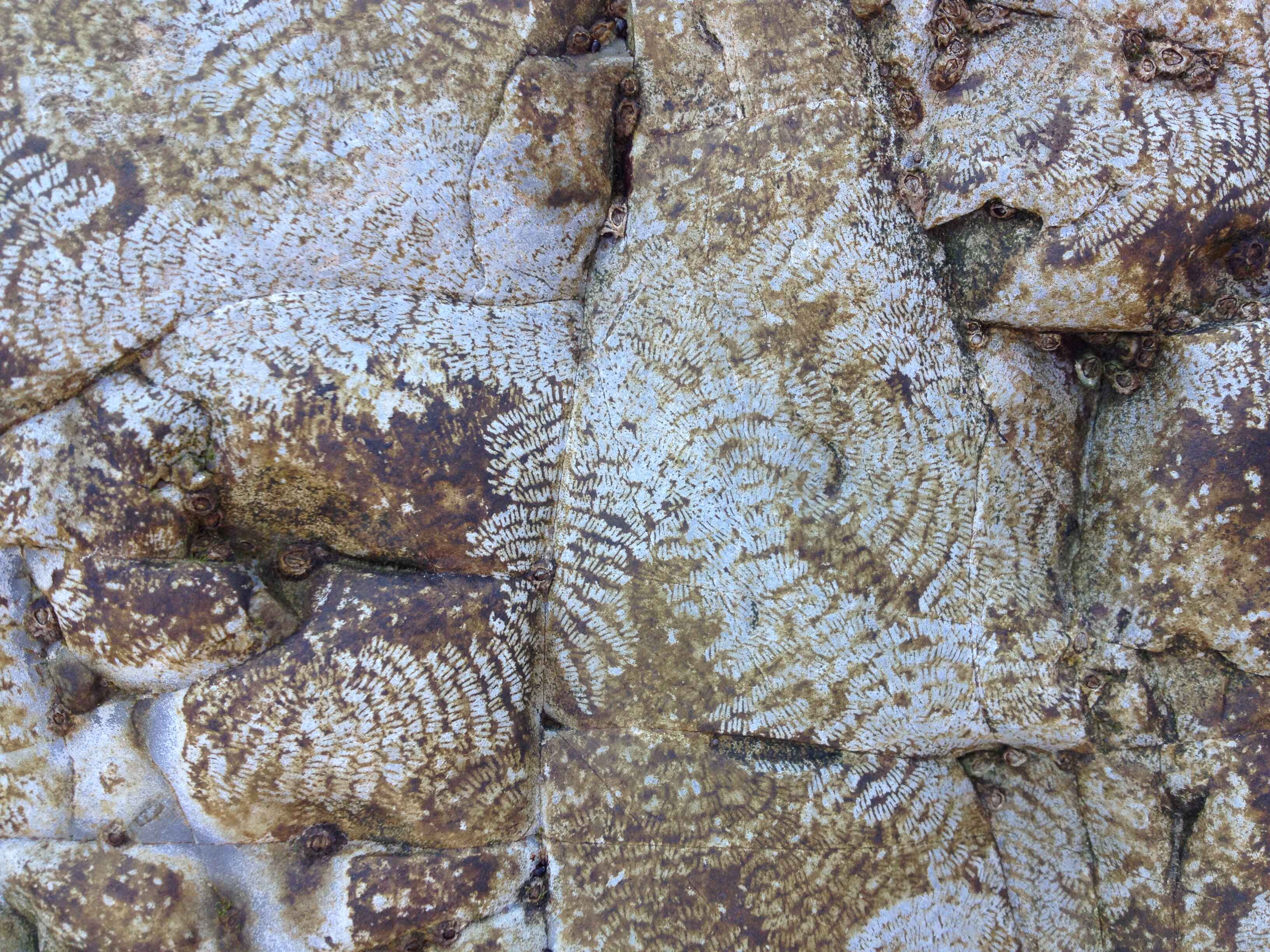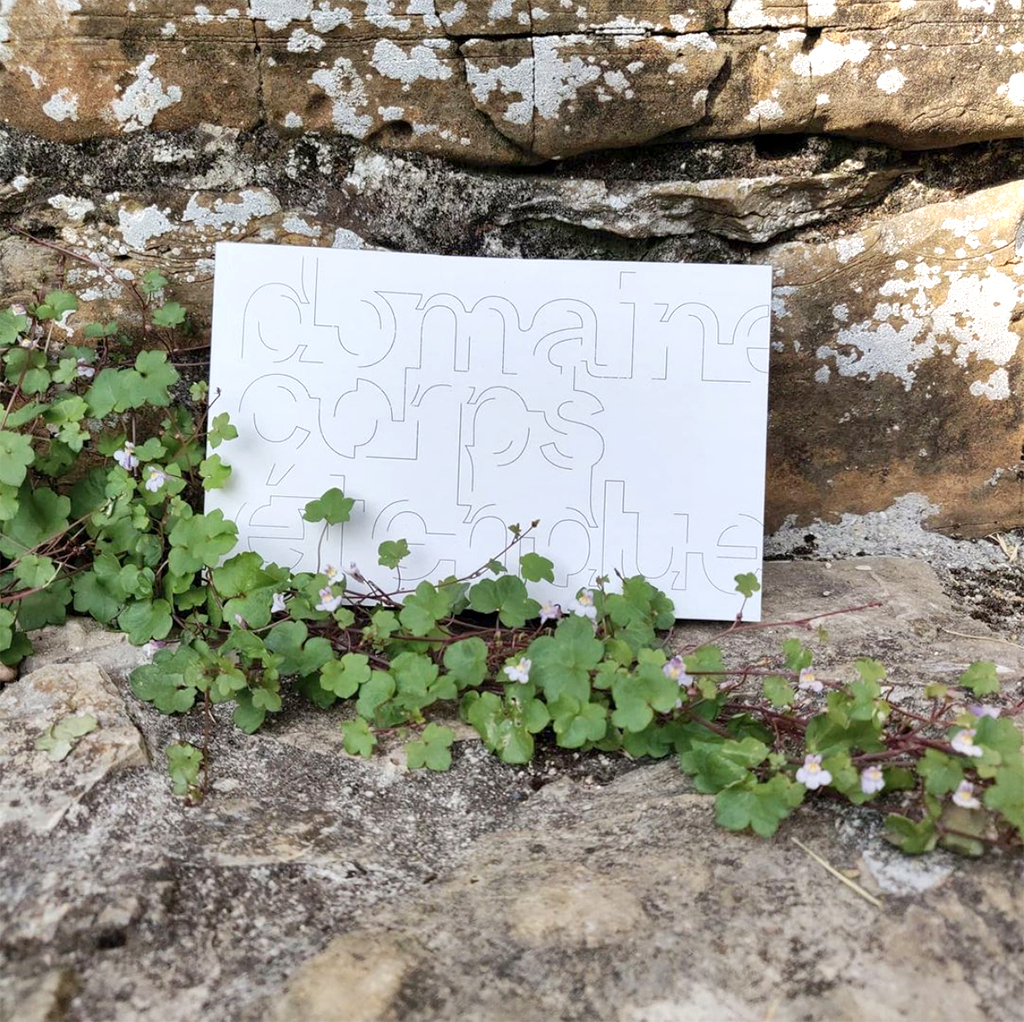Christophe Clottes
Si seulement nous avions le courage des oiseaux
[If Only We Had the Courage of Birds]
Siffler sur les graines, 2021 (detail). Evening primrose stalk peeled by goldfinches, primrose seeds harvested and whistled on a water runoff. Dimensions variable.
© Christophe Clottes

Work in progress, limpets, 2020-2021

Christophe Clottes, Book domaine corps étendue, May 2021.
Publisher: NEKaTONEa + Photo credit
Graphic Design: work in process
Text realized for the book domaine corps étendue, fruit of the residency and exhibition of the artist at NEKaTONEa at the Domaine d'Abbadia (Hendaye) in the framework of the residency programme carried out with the CPIE Littoral basque.
Artist’s Website
Christophe Clottes
Look at the Show
Réinsertion
Read Also
J’ai pris la liberté de m’asseoir [English Version]Sérendipité [English Version]
Every time I find myself above these long expanses covered with bushes and air (covered with bushes like so many combs for the air) and which end far away in blue vapours, which end in wave crests, in foam (as if the idea of the sea were beckoning me from afar with its diaphanous, trembling hand), I perceive, at this time of year, invisible, higher, suspended, these bushes of bird calls, these more or less distant points of sonic effervescence.1
Christophe Clottes is a walking artist. He maintains a link with nature through walking, listening and a certain nourishing contemplation. Walking as a vehicle for ideas, walking to welcome thoughts that he would never have had without the circumstance of walking, to let himself be seized by the sounds and the winds. I could only walk and walk again, remember, glimpse, forget, insist, rediscover, lose myself.2
Moving around, observing, reproducing without seeing, in the series of drawings with protocol Échos, the artist's gestures could be circumscribed to an automatism. In the reversal of an evening primrose's stem, in the archaeological tracing of the gastronomic paths of limpets, in the mass of flint nuclei, in the infinite 8 of a barrier coiled up on itself... in many places in his work, these feelings of spontaneity, of "almost nothing", can emerge. However, this reading of the work, apart from being highly reductive, is (moreover) not entirely accurate. It lacks subtlety, it does not go into the invisible zones. And it is precisely in these places that Christophe Clottes increasingly inscribes his artistic work, his reflections and his acts. He touches on the infra-thin. He proceeds by micro-gestures, micro-actions, micro-organisms. He takes care. He has a philosophical attention for the fragility of relationships, of balances, of fauna and flora, of beings. He strives to make room for this delicacy. Like a need to create things that do not last and to claim their importance.
This is, in my opinion, what anchors the strength of his purpose and his works, and what sometimes confuses their apprehension. A visual artist deliberately arcs his work towards what cannot be seen. Almost not. It is up to us to work, to listen, to detect and to be moved. Everything has always been there: time, vibrations, the body, rhythm, movement, and intense freedom.
Christophe Clottes' works have to do with the performed event. This enlightening evidence has recently become apparent to me. From the drawings, engravings, videos, musical compositions, architectures, to the timely salads of Cuisine de campagne, to the dance of the installation Enveloppée and the delightful beings of Condition erratique, the whole of the work takes place in the field of action, of performance. The claim is present, not in the provocative or "mutilatory" form of the medium's origins, but in a relational dynamic, in social interactions and in its environmental positioning.
The artist's body undertakes, puts itself to work, frees itself and plays with constraints. It performs outside the field when it painstakingly inks dots on the velvety paper, breaks up the heavy pebbles of the Gave de Pau to extract the essence and pigment, domesticates stick insects, stages bees, pursues limpets on the foreshore3 , and builds geometrical modules. More recently, the body is exposed when the artist orchestrates the song of the stones, films herself during a period of confinement or dialogues with the birds, holding a circumstantial conversation in the Basque breeze that erases borders.
The border, that of the neighbouring country which reappears frighteningly in times of global pandemic. The one drawn by the fences that partition the space of the garden, of the protected domain on which the artist works in residence. It is the demarcation that the volatile mocks.
The border also appears under his hand, a chalk line on the studio floor, others in felt-tip pen on the walls and paper. The line, even unfinished, delimits the outline of a form. Its perimeter gives rise to an inside and an outside, it forces one to position oneself (to incorporate and be incorporated).
Christophe Clottes' artistic universe combines his interest in biota and the Flyshs of the Basque Country4 , his reflections on ecological and social habitats, anarchy with the forces that go beyond us, the mountains, phenomena such as the tides or the journey of erratic blocks and their share of magic. With what the artist reveals of goldfinches freely appropriating the seeds of an invasive plant not indigenous to their territory, of the photographed birds of passage and of the various animals with which he has worked for many years, I like to imagine him as an active member of the Association of Therolinguists. This group of scientific linguists discovered that ants write pamphleteering poetry with their pheromones, that they are political and libertarian5 . The therolinguists also uncover the impenetrable texts of octopuses whose ephemeral writing, written by their ink jets, is dispersed in the water.6
In the poetics of Christophe Clottes' works, the living and its multiple deployments, distorted temporalities, the science and mythology of rocks and landscapes, as well as those who call themselves "human beings", converge. The artist shows the world in movement, integrates himself into it ... and as he could not describe this other world with sentences, he did so with tales, so that man could also dance with the light.7
— Émilie Flory
France, Avril 2021
The title is a line by Dominique A, from his 1991 song Le courage des oiseaux.
1 et 2. Philippe Jaccottet, Paysages avec figures absentes, 1970
3. The foreshore is the part of the coastline that is covered at high tide and uncovered at low tide, also known as the "tidal range" or "tidal zone". A particular biotope that shelters a rich and specific ecosystem.
4. Flysh is a sedimentary formation, often thick, consisting of alternating layers of sandstone and clayey limestone accumulated in an oceanic basin that is closing as a result of the collision between two tectonic plates (mountain in the process of surrection).
5. Ursula K. Le Guin, The Author of the Acacia Seeds and Other Extracts from the Journal of the Association of Therolinguitics, 1974 (VF L’Auteur des graines d’Acacia, 1988)
6. Vinciane Despret, Autobiographie d’un poulpe et autres récits d’anticipation, 2021
7. Anna Lazowski & Patrick Fischmann, Contes des sages gardiens de la mer, 2019